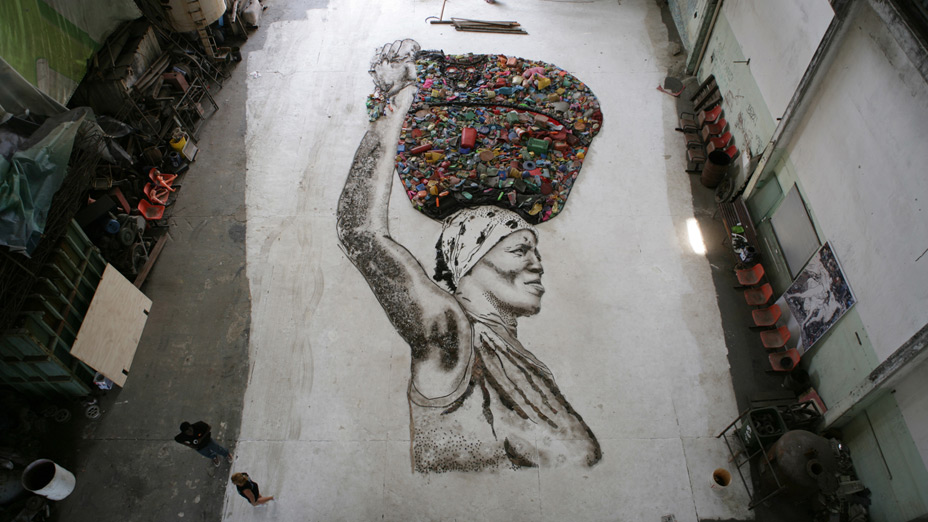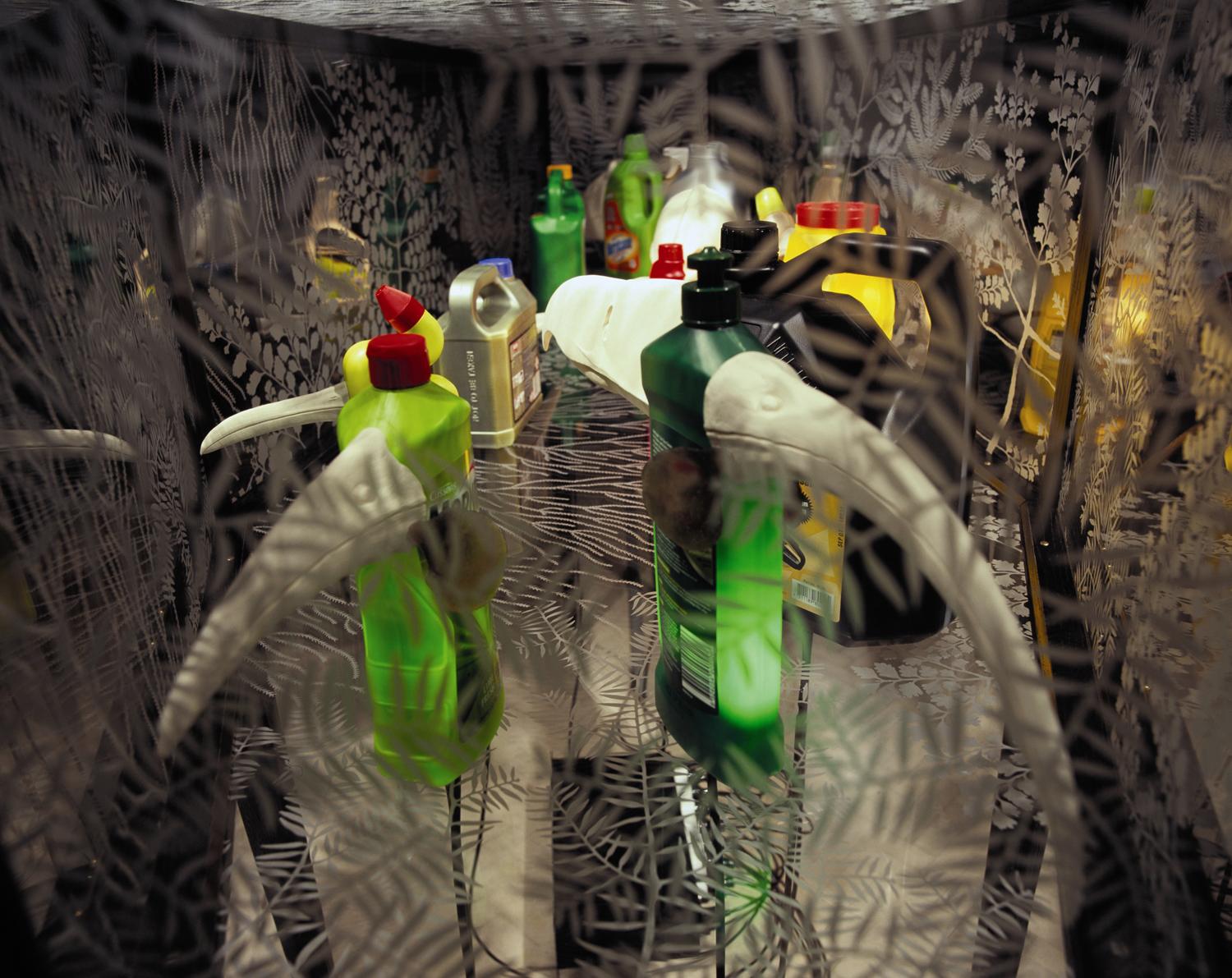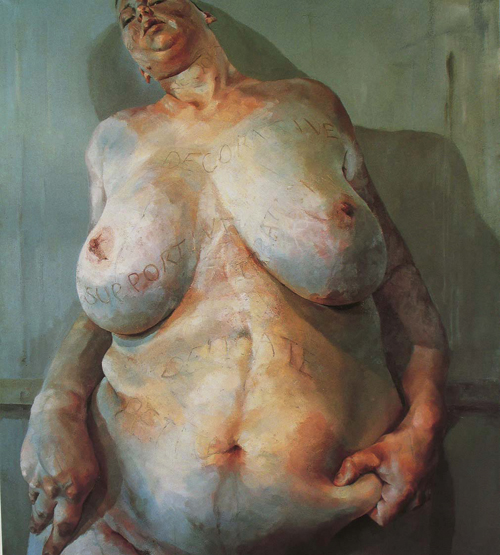The Parisian photographer
JR is a man routinely touted as the hippest street artist since Banksy. His work has sold at Sotheby's and been plastered 100ft high on the wall of Tate Modern. His celebrity admirers include Trudie Styler and Damon Albarn. But regardless of his undoubted artistic pedigree, it seems inevitable, given his name, to ask him about Dallas.
So is his two-letter moniker a tribute to the fictional 80s oil baron JR Ewing?
"No," he laughs when we meet in his Paris studio, a bright, airy space filled with video-game consoles and designer chairs. "It's just my initials."
And they stand for?
"I can't say."
The deliberately enigmatic reply is more than mere artistic pretension. In fact, JR's anonymity is crucial to the integrity of his work: this is an artist who prides himself on operating under the radar, on creating dazzling installations in unexpected places through the force of his personality and vision.
As a teenager, he started out as a graffiti artist but began taking photographs when he found a camera on the Paris Métro. Now aged 26, he mixes the two forms and styles himself a "photograffeur", pasting oversize black-and-white photographic canvases in surprising public locations. It is something of a point of honour never to ask permission from the authorities.
"The fact that I stay anonymous means I can exhibit wherever I want," he explains with a broad grin, a plate of microwaved lamb tagine balanced precariously on his knees. "No one knows my name, so it's easy for me to travel."
In the aftermath of the 2004 riots in the Parisian suburbs, JR chose to exhibit in the grand central districts of his home town, pasting up photographs on the walls of the Marais. Portrait of a Generation featured close-up pictures of the young residents of the banlieues pulling funny faces through a fish-eye lens. Instead of the immigrant thugs of popular imagination, the Parisians who walked past JR's photographs were confronted with a more human image. "Most of the media shots of the rioters were taken with a long lens," explains JR, who comes from a mixed-race background with Tunisian and Eastern European heritage. "I used a 28mm lens to capture them really close up."
The second phase of his 28 Millimètres project took JR to the Middle East, where he mounted what is believed to be the largest illegal photo exhibition in the world. Appropriating a border wall running the length of the disputed areas between Israel and Palestine, JR pasted a giant triptych of a rabbi, a priest and an imam wearing deliberately comic expressions. The message was simple but arresting: when you are mugging it up for the camera, what brings you together is more in evidence than what sets you apart. "It's about breaking down barriers," JR says. "With humour, there is life."
Most recently, JR's ad-hoc exhibition space has included some of the most dangerous and poverty-stricken places in the world. Women Are Heroes is the third phase of the project and has seen him travelling to the slums of Kibera, Kenya, where he covered 2,000m² of rooftops with blown-up photographs of the women who lived there.
"I was interested in women because I realised in the projects I'd done before – most of the time in the kind of places I was going to – it was men on the street, but it's actually the women who are the ones holding the community together."
Then in 2008 he went to Morro da Providencia, the oldest and most perilous favela in Rio de Janeiro, to paste portraits of its female residents on the sides of the houses in which they lived. The distinctively monochrome eyes and faces were positioned looking towards the centre of Rio, a constant reminder of the grinding poverty that exists on the doorstep of one of the most cosmopolitan cities in the world.
"I asked each woman to give me something real," says JR, recalling the process. And it is true that, in contrast to the usual media images of grief and despair, the women project a pride in where they come from and a certainty about their own identity. "The photo is the story," he says. "They all gave me really strong eyes because they knew they would be facing the city."
It seems difficult to imagine JR in the heart of a drug-ridden favela. He is a slim and smiley young man, today wearing the casual uniform of the urban hipster: a Day-Glo sweatshirt, a black trilby and a pair of fashionable, thick-rimmed glasses. Was he scared? "Yeah of course," he says, nodding his head vigorously. "You can't even get a taxi to take you there… There are kids with guns and bulletproof jackets on the street. It's like finding yourself in the middle of a war."
In fact, the favela is so lawless that journalists are banned and no NGO operates there. Undeterred, JR simply drove himself to the centre of the shanty town and started chatting about what he wanted to do to anyone who approached him. He had been drawn to the favela by news reports concerning the murder of three innocent young men caught up in the brutal turf wars between drug traffickers and corrupt military police.
"Everything is about eye contact," JR says. "The first thing they have to know is that there's no brand behind it, that's really important… I'm not trying to use the favela to advertise Red Bull or BMX bikes, and I'm not a journalist either.
"I could speak for hours about the origins of the poster technique, but out there, there is not the same frame of reference. You have to go straight to the point. There's this person in front of you and there's no fucking around. That's how I test my projects: if they get it, it's going to work."
Almost immediately, the women of the favela understood what JR was trying to do. He asked anyone interested in participating to come along to an informal meeting. "The women who came were the ones related to the three kids who had been killed: the grandmother, the mother, the best friend. They reappropriated my project to tell their story." The end result was startlingly beautiful: a faceless community with its humanity regained.
But however successfully JR's installations work as art, they have a social conscience, too. In Kibera the photographs of women on the rooftops were printed on to vinyl so that their homes would be waterproof. The sheets of corrugated iron used in another part of the shanty town were distributed afterwards to those who had taken part. Last April JR returned to Rio to set up a cultural centre in the heart of the favela. All of the money he makes from the sale of his work – in 2009 a print of one of JR's most famous photos, "Ladj Ly", sold at auction for £26,250, and he has just sold an image to Damon Albarn for the cover of the forthcoming Africa Express album – is ploughed back into his projects so that JR can ensure his continued independence. "The finance is a key part," he says. "You wouldn't take it in the same way if I did it with L'Oréal."
There is a sense, also, that if JR were to reveal his name or speak more about his background, this would somehow detract from his work. Most graffiti artists start out by tagging their name on empty walls and tube carriages. JR does something different: he takes those who live on the margins of mainstream society and he gives them back their individuality. Paradoxically, perhaps, the photographer without a name creates extraordinary art by restoring the identities of the nameless.
by Elizabeth Day
The Observer, Sunday 7 March 2010
from: http://www.guardian.co.uk/artanddesign/2010/mar/07/street-art-jr-photography




















